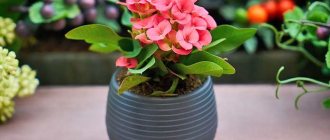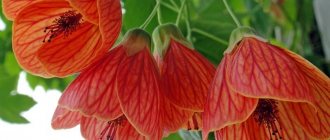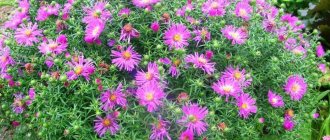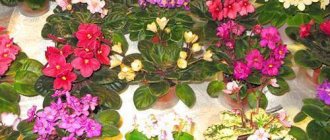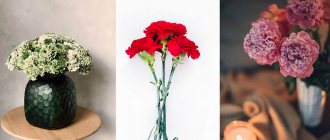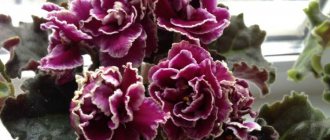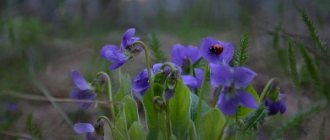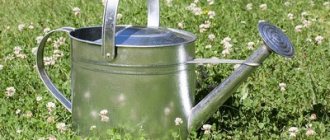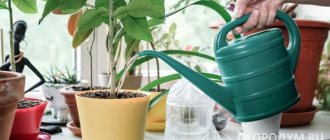The tallest monolith in Coral Castle. Some sources indicate that its height is 12 meters, but in fact it is 7.6 meters
And this is Edward Leedskalnin himself
Stone gate
We highlighted this object because (in our opinion) it deserves special attention.
This structure is a flat stone rotating around its axis, 2.4 meters high, 2 meters wide, 50 cm thick and weighing 8.2 tons (according to other sources, 9 tons).
This gate is the most famous exhibit of the unusual museum. The massive door rotates around its axis, passing just a few millimeters from the walls. The gates used to be so well balanced that even a child could turn them with one finger.
Stone gate
The secret of the perfectly balanced gate axis and the ease with which it rotated was only revealed in 1986. Then the stone door broke for the first time.
It took 6 people and a 50-ton crane to repair it. Once the gate was removed, engineers discovered that Leedskalnin had drilled a hole through the stone and inserted a metal shaft that rested on an old truck bearing. It rusted and jammed, causing the gate to break. They started working again on July 23, 1986, but needed repairs again in 2005.
Despite the work carried out, the gate still rotates much more difficult than initially.
Description of flowers similar to violets
There are few varieties of plants similar in appearance to violets. Some of them can be listed:
- Gloxinia. The analogy is noticeable in the shape of the inflorescences, their color and location on the foliage. The difference is in the structure of the leaf, the cut of the bud and the structure of the pistil. Greater proximity to terry species.
- Primrose. Outdoor plants are bright and lush. They are similar in the arrangement of the petals, but their shape is slightly different. The primrose flower is flat and wide open, as if smoothed out.
- Achimenes. Blue flowers surprise with their tenderness. The foliage is different; it is small and uneven at the edges.
- Petunia. The numerous colors and shape of small inflorescences make the appearance similar to violets.
- Deikun. Blue bells are somewhat elongated, like violets, similar in tenderness and structure of the inflorescence.
All plants that look like violets are similar in one parameter: leaves, inflorescences, pattern, color. But in general, violet is original and unique.
When and how was Coral Castle built?
Construction of this surreal piece of architecture began in 1920. Then Leedskalninsh purchased a 4-acre plot of land for $12 in the Florida City area. All work took place only at night and in secrecy. Edward had no assistants. No one ever saw him move the huge blocks of stone from the Gulf Coast or whether he took them from there.
Interesting fact - The material from which most of Leedskalnin's creations are made (that same oolite) is often found in south Florida. And not only on the coast, but also literally a few centimeters under the soil layer. In addition, it is a stone with very sharp edges that can easily damage your hands.
How he processed and, most importantly, how he alone (and you remember his build) moved colossal blocks is also unknown. To all questions about how he did it, Edward answered that he had revealed the secret of the construction of the Egyptian pyramids. But he didn’t want to share his discovery.
Interesting fact - The eccentric creator himself called his work Rock Gate Park. The name Coral Castle (respectively Coral Castle) appeared later.
Work continued until 1936. But suddenly they plan to build a multi-storey building next door to it. Lindskalninsh is forced to buy another piece of land a little further north, in the city of Homestead, and... move his work to a new location.
Once again, no one saw how he managed to load and unload the trucks. The complete move of the castle took 3 years.
Once again, work began to boil and continued until Edward’s death in 1951. In total, he worked on the castle for 28 years.
Types of violets of unusual color
Other varieties of violets have a delicate, unusual color. These include the following colors:
Lilac
- Lilac charm is comparable to bouquets made of soft fabric or corrugated paper. Yellow hearts dapple brightly on the soft blanket of petals.
- Favorite daughter. The rich shade is close to emeralds. The rosettes give off a shine, giving the impression that the petals are covered with small drops of dew. Small inflorescences are darker than mature ones. This combination is very beautiful.
Variegated
- Lemon snow. Not only the buds, but also the leaves are original. They are speckled with white splashes and a bright snow-white edging. The inflorescences are snowy, and the lemon tint comes from the stamens.
- Villodene. The leaves are even whiter. There is very little green tone left. Emerald pink flowers are similar in color to early peaches.
- Chimera. There are bright white daisy patterns on a purple base. Another way to describe the pattern is as bright stars in a dark night sky.
The further fate of the castle
After Edward's death, the castle became the property of his nephew. But after 2 years he sold it to jeweler Julius Levin. Nothing noteworthy happened to the Castle until 1981, when it was acquired by the Coral Castle company.
Since then, a museum has been organized in the Castle, which has become a popular tourist destination in Florida. Today this company is the owner of Coral Castle.
In 1984, the Castle was included in the list of historical landmarks of the United States of America.
Theories and mysteries of the Coral Castle
The appearance of this extraordinary attraction is associated with many guesses, theories and assumptions, both scientific and fantastic. We will try to present them all. But it’s up to you to believe in them or not.
- One version suggests that Edward punched holes in the stone slabs and placed highly heated car shock absorbers there. Then he poured ice water on them, and the shock absorbers tore the slab
- Ray Stoner, author of the book “The Mystery of Coral Castle,” proposed his theory. He claims that Leedskalnin controlled gravity. Ray believed that the Earth was covered by an invisible energy network, and at the intersection points of its “force lines” an energy field appeared that could easily move the most massive objects. Stoner thought that one of these points was located in Florida, in the place where the castle was built. That is why it was possible to control gravity here, creating the effect of levitation. Several teenagers claimed to have seen Leedskalninsh making stone blocks move like balloons.
- There are other versions. For example, that Edward had supernatural abilities to control natural forces.
- Someone said that torsion fields were used in construction.
- Others claimed that the castle was built using sound vibrations.
- Ufologists are confident that the castle was built at the UFO landing site.
According to another version, he used a special effect of electromagnetic resonance. Rumor has it that an unknown device was found on the territory of the castle, with the help of which Edward received a special electromagnetic field and reduced the weight of giant monoliths to virtually zero
But all this is just speculation. The author of the extraordinary attraction himself did not reveal a single secret. He replied that he knew the secret of creating pyramids.
Edward published 5 small books. The most famous of them are “Life of Minerals, Plants and Animals”, “Magnetic Flux” and “Magnetic Basis”. These books are studied by scientists in the hope that the author left in them the key to his secrets.
For example, in the book “Magnetic Flux” it is written: A magnet is a substance that constantly circulates in metals. But every particle in this substance is itself a tiny magnet. They are so small that there are no barriers for them. It is even easier for them to pass through metal than through air. Magnets are in constant motion. If this movement is channeled in the right direction, you can get a source of enormous energy...
Edward claimed that he was cured of tuberculosis with the help of magnets, supposedly they had an effect on the disease.
There are suggestions that all stone structures were simply made of concrete, which was poured into certain forms.
Edward himself, either jokingly or seriously, spoke about the use of a “perpetual motion machine.” He also stated "It's not hard if you know HOW."
No matter what anyone says, the secret of building the Coral Castle is still unknown.
Popular varieties of indoor white violets
Snow-white varieties create grace and bring purity and innocence into the home. The compositions touch, soothe and bring a special kind of peace and tenderness.
- Bells ireland. The flower has a soft white background and regular shape. Semi-double buds look like bells. The edges of the stars are painted in a light green tone. The buds are compact and very simple in appearance. The pedicels are long, white stars rise high above the dense green leaves.
- Alice Blizzard Baths. The small white inflorescences are shaped like stars. Against the backdrop of heart-shaped leaves, their lush forms look attractive. I would like to carefully examine every outline of the white star.
- Snow lace. The terry nature of the white inflorescences creates a snowdrift. In the center of each there is a bluish streak, a small delicate spot. If you look closely, you can see a green tint, it seems that this is the reflection of the leaves, but in fact it is the color of the petals.
- The bride's bouquet. Delicate lush white stars are framed by wavy edges. The ideal purity of the white tone explains the name of the violet. Apart from the yellow cores, there are no other reflections or patterns on it.
- YAN Caprice. The cap looks like white foam, harmoniously combined with variegated leaves that have terry edges.
Coral Castle in tourism
This tourist attraction is now privately owned. About 100,000 people visit it every year.
Schedule
The Coral Castle is available for visits according to the following schedule: Sunday - Thursday from 9:00 to 18:00 Friday and Saturday from 9:00 to 19:00
Cost of visit
Adults under 64 and children over 13 years old - $18 Adults over 65 years old - $15 Children from 7 to 12 years old - $8 Children under 6 years old - free
Coral Castle is available for a variety of events, from birthday parties to wedding ceremonies.
Address: 28655 South Dixie Highway, Miami, FL 33033
An interesting fact is that Edward Leedskalnin himself charged 10 cents for excursions around his Castle.
Large-flowered violets
general description
For easier orientation in the world of violets, they were divided into several groups. If you are not interested in violet growing professionally, then you can distinguish three main groups:
- industrial;
- variegated;
- collectible (exhibition).
It is the collection group that is characterized by large inflorescences with flower sizes from 5 to 7 cm, and especially large ones more than 7 cm. Their difference from other groups is that almost all types of collection violets have large double flowers of a wide color spectrum. Also, their leaves have a variety of colors and stand out with their wavy shape.
In addition to the collection group, large-flowered violets also include garden species (Wittrock), characterized by a highly branched compact or semi-spreading form, with flowers up to 10 cm in diameter.
Top 10 varieties with a brief description
Selecting the ten largest-flowered violets is very problematic due to their large number. In addition, the size of the flower largely depends on the growing conditions and care for them.
J. Munk selection
“Apache Magic” - Huge, semi-double, orchid-shaped flowers of dark purple color. The edges of the petals are strongly wavy with a pencil-interrupted white border. Dark green, white and pink “show” foliage. Slightly wavy and jagged. The sheet plate is corrugated and quite large in size. It is characterized by a colorful, especially pronounced variegated foliage of a creamy-pink hue. The rich color of the flowers can, in some growing conditions, take on a dark purple, almost black color. Abundant flowering.
S. Sorano selection
“Arctic Frost” is an exemplary violet in terms of size, flower and rosette shape, with very large semi-double snow-white flowers - a star. The rosette is also not small, but it is worth it, giving out such unimaginable exemplary beauty. The flowers are simply huge, 7-9 cm in size, either simple or semi-double, snow-white in color with an intermittent blue border. The blue color of the border, depending on the growing temperature, may occupy a larger or smaller area of the petal. The foliage is large, the peduncles are strong, it blooms profusely, resembling a lush cloud.
Selection by D. Denisenko
“Dn-Fleur” is a highlight variety. The opening of the flower appears as a monochromatic light fantasy, which stretches as it grows, with the appearance of a dark lilac edging. The flowers are quite large in the lilac spectrum, simple or semi-double stars. The leaf is dark green, jagged, quilted, with a red underside. The peculiarity of the variety is that each flower is individual, with its own unique color, which includes all kinds of strokes, dashes and the size of a white fantasy on a lilac background. Has long cap flowering.
Selection LLG/P.Sorano
“Music Box Dancer” - under 8 cm, two-tone, semi- or terry pale pink stars. The pink color gradually turns into a white border. Green, spoon-shaped, medium-sized, upturned foliage. Quite a large and clumsy socket. Long petioles and uplifted foliage take up a lot of space. Flowering is very abundant, especially the first one. But, large flowers and a bouquet appear after the third flowering, which is quite long, on average about 3 months. Prefers to be grown in cooler conditions.
Violet Breeder selection
“AV-Polar Bear” - Quite large, under 7-8 cm, densely double flowers, reminiscent of large white balls. The leaf is green, quilted, slightly wavy in shape. Peduncles are strong and rather large. The multi-layered nature of the flower is admirable. Depending on growing conditions and care, they may have a slight pinkish tint on a white background. As violet growers say about the size of a flower - “A bear is a bear.”
"AB-Mother's Heart" - very large, up to 10 cm, simple and semi-double, with a wavy white border, dark purple star flowers. The leaves are medium green, not much wavy, standard. The socket is compact in size, smooth and neat. Under good growing conditions, the flowers are dark red-burgundy in color, with a pencil white stripe along the edge of the petals. The compact rosette does not allow the placement of a large number of buds, but it accommodates many flower stalks. Visually, cap flowering is visible after 4-5 flowers have bloomed. Flowering is about a month, frequent and constant.
Selection by K. Morev
“Wedding bouquet” - snow-white, huge, double, multi-layered star flowers, with a slightly corrugated border, sometimes having a greenish tint. The leaves are all even, standard size, green and glossy. The rosette is semi-miniature, smooth, self-growing. Flowering is abundant, wave-like, loosely bouquet. The variety is considered one of the best white-flowered Saintpaulia species. There are two types - with rounded and pointed leaves. With rounded foliage they are more demanding to care for.
Selection by Korshunova E.
“EK-Blue-Eyed Russia” is a numerous winner of various international exhibitions. Semi- and double pale blue stars, with slightly elongated and wavy petals, along the edges of which a purple edging stands out. Exhibition green rosette with pointed leaves. The rosette is large and self-developing. The flower reaches a size of 7 cm and stays on the peduncle for up to 5 weeks. Cap flowering is regular and long-lasting. Like all varieties selected by E. Korshunova, it prefers a good substrate and coolness. If this is observed, then the border appears.
“EK-Fireworks” is an interesting fiery coral color with a purple coating and a border of the same shade. Slightly elongated and pointed dark green leaves, red on the underside. The leaves grow slowly on a rather loose rosette. The flowers are large, reaching 6.5-7 cm and changing color intensity as they grow. Many buds are formed on strong peduncles, which do not bloom together. It is not fussy about care and produces quite a lot of babies. Loves the summer season and the sun's rays.
Viola Wittrock “Colossus” / COLOSSUS F1
A specially bred series to produce violas with flowers that are gigantic by the standards of violets. Compact peduncles form a flower well even in fairly hot climates. Blooms well in spring and autumn, does not grow tall. Looks impressive and beautiful in the garden in different areas. Grows well in cassettes. Retains a beautiful presentation for a long time. Color - tricolor.
Purple varieties of indoor violets
Purple color is unusual for flowering houseplants. The gentle tone is beautiful and gentle. Violets of this palette have always been liked by lovers of home beauty. The most striking types of this color include the following plants:
- Currant dessert. The shape of the inflorescences is similar to stars. Along the edges of the petals there is a thin fringe of a darker blue tone. The stamens are bright yellow. The overall background is reminiscent of blackcurrant jam.
- Winter rose. Externally, the plant resembles a bouquet under frost. The centers of the roses and the buds that have not yet blossomed have snowy outlines and colors. Small petals open into a rose, the edges have a delicate white fringe: purple with a white border.
- Baltika . The semi-double variety has a special feature. The rosette becomes quite large, the petals have jagged edges. The color is difficult to describe. It seems that a shadow falls on the light purple leaves, which blurs the main palette.
- LE – Rings of Saturn. The flowers are large in size, open and clear in inflorescence shape. All details of the bud are visible. The peculiarity is in the rim of a lighter tone. The main shade is lilac.
- Balchug Avenir. The classic shapes of the petals have two tones - blue and pink, their merging gives a violet tint of delicate warm tones in the sun.
- Blue watercolor. Terry buds have an interesting color. Violet strokes are casually applied on a white base. They do not have a clear pattern; an original head of light colors is created.
Features of care
Nuances of conditions of detention
There are no special conditions for growing the bulk of large-flowered violets. The main and most important requirements are the size of the pot, the quality and composition of the soil, lighting, temperature, choice of fertilizing and compliance with the watering regime. Only some species prefer a slight decrease in temperature for a more saturated flower color or bud formation.
How to water correctly?
One of the main components of successful cultivation of large-flowered Saintpaulia species is compliance with the correct watering regime. Like almost all types of violets, large-flowered ones are afraid of drying out and waterlogging of the soil. Therefore, you should not overdo it with watering.
The frequency and volume of watering depends on several factors:
- season;
- age condition;
- the size of the container in relation to the size of the plant;
- temperature and humidity in the growing room;
- quantity and saturation of lighting;
- quality and composition of the soil.
On average, according to the recommendations of experienced gardeners, watering is done 2-3 times a week in the summer and once a week in the winter.
Do not forget about the quality of water for irrigation. It should be clean, soft and warm.
Lighting
The duration of daylight hours should be about 12 hours per day. But, in this case, you should avoid direct sunlight on the plant, and provide diffused light. If it is impossible to provide the flower with this amount of daylight, it is better to use additional light sources, such as phytolamps.
Nature of feeding
Additional nutrition depends on the growing season and the structure of the leaf blades. At each phase of the growing season, a certain composition of fertilizers should be applied. For large-flowered specimens, additional nutrition occupies a special place. For full flowering of flowers of this size, the necessary composition of fertilizers, both organic and mineral, containing a full range of necessary micro- and macroelements, should be applied in a timely manner.
The soil of a newly transplanted violet becomes depleted approximately a couple of months after transplantation. From this moment on, you should add the entire complex of substances necessary for the plant for full development, growth and flowering. In addition to the complex of basic elements - nitrogen, phosphorus and potassium in the ratio NPK: 20:20:20, the composition should also include trace elements: Ca, Fe, Mg, Mo, B, Na, Cu, Z and S.
The first nutrition is applied in the spring after the plant awakens. During this period, complexes with a high nitrogen content are used. In the phase of budding and rosette formation, fertilizer complexes with a predominance of potassium and phosphorus are required. Subsequent feeding is carried out with fertilizers for violets with an equal ratio of micro- and macroelements.
Reproduction
For garden large-flowered violet feeds, propagation or reproduction of new planting material is carried out by seeds, cuttings or dividing the bush. Propagation of indoor violet (Saintpaulia) is mainly carried out by leaf cuttings, rooting them in water or substrate, followed by planting the children.
There are varieties that reproduce very well, but there are also those that you need to tinker with, ensuring quality with quantity and creating the necessary conditions. But, basically, large-flowered species are propagated in the same way as ordinary, standard specimens.
Growing perennial species from seeds
Viola Wittrock, or as it is also called, garden viola, is a large order, divided into several types: one-color, two-color, spotted, etc. The varieties are quite winter-hardy, so they are planted and grown in open ground. But, in this case, flowering will not occur in the first year. Typically, gardeners grow seedlings to obtain flowering in the first year. The seeds are sown in February in a special substrate for sowing violets. The seeds are sown in shallow grooves, sprinkled and covered with glass or film. The container is transferred to a room with a temperature of about 15°C and a sufficient amount of light, without direct sunlight. After 1.5-2 weeks, high-quality seed material germinates. No special care is required at this stage; periodic watering is required to avoid drying out of the soil. You should also fertilize twice a month.
The first picking of seedlings is done at the stage of two leaves, the second after 2-3 weeks. But, even without a second picking, seedlings can be planted in open ground, thanks to the good survival rate of the viola.
What to do to prevent flowers from becoming smaller?
Like any plant, violation of care requirements or failure to create the necessary conditions leads to the loss of some qualities. The main reasons for crushing flowers:
- first flowering;
- overfeeding with fertilizers;
- heat;
- insufficient humidity in the room;
- soil quality.
Difficulties of care
Why do the buds begin to shrink?
The reasons for grinding are described above, but the grinding of buds in large-flowered species occurs mainly due to high temperature, dry air in the room, adequate nutrition, and the work of the root system. The root system is unable to provide nutrition to the entire plant due to heavy soil
How does a lack or excess of substances affect the outlet?
Large, strong show plants need balance - lighting and nutrition. The food should be appropriate to the size of the pot. A large crown requires an appropriate volume of roots. At the same time, overfeeding causes increased crown growth and a “clumsy” rosette. Therefore, nutrition should be balanced, introduced “for health”, without excesses. Insufficient nutrition leads to delays in growth, development, and lack of flowering.
